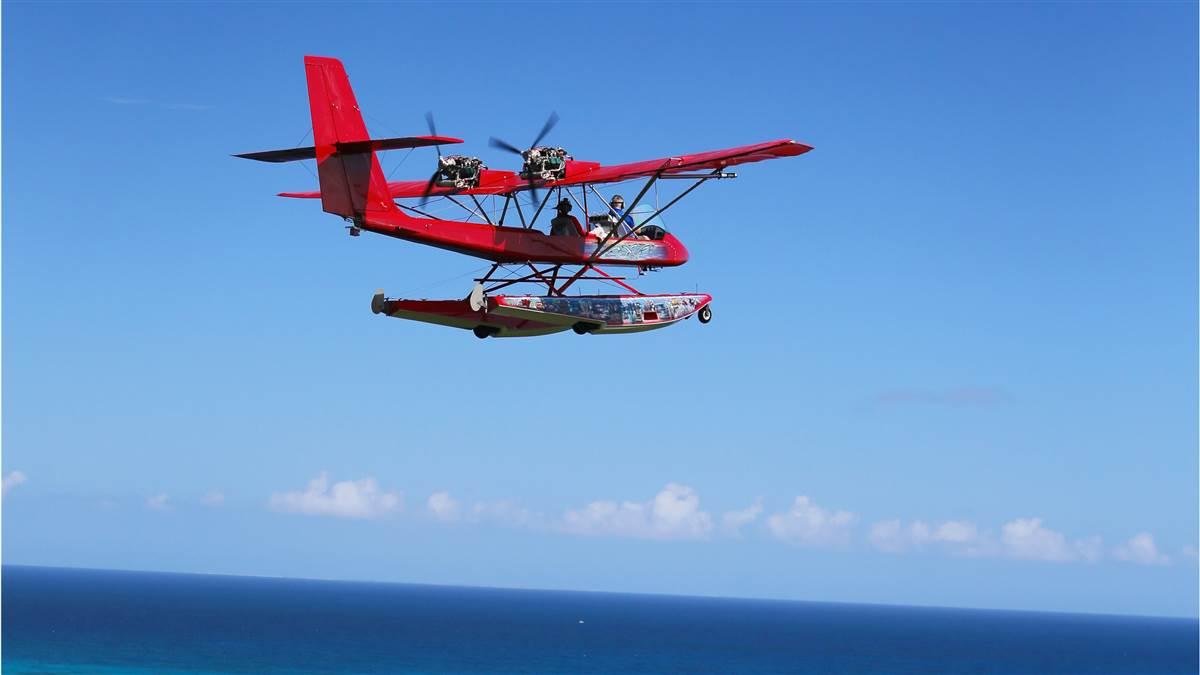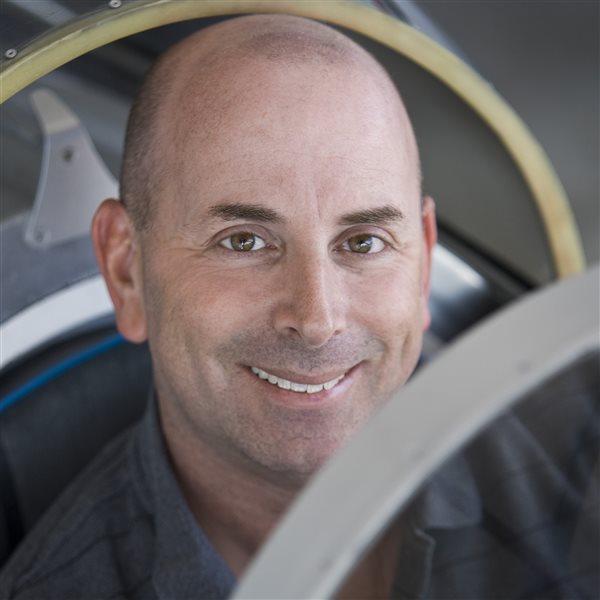Flying low, safely
Thoughts from AirCam designer Phil Lockwood

“We fly to have fun, and the AirCam is purely about fun,” said Lockwood, whose Florida firm has delivered about 300 of the two- and now three-seat kit airplanes since the 1990s. “The question is, how do we maximize fun and minimize risk?”
Lockwood is no stranger to high-risk flying. He piloted ultralights with notoriously balky two-stroke engines with wildlife photographers over remote parts of Africa for many years. The idea for the AirCam came out of a National Geographic assignment that required many hours of flying a few feet over the treetops of a sprawling rain forest where the odds of surviving a forced landing were slim.
“When I was flying single-engine airplanes in Africa, I accepted the risk,” he said. “The only way to minimize risk was to minimize the time of exposure. That’s just the way it was. But I wanted to do more.”
The twin-engine AirCam allows pilots to climb at full gross weight on a single engine in any configuration. Just power up and center the ball on the inclinometer. The AirCam can even take off from a standing start on one engine.
But two four-stroke engines, excellent forward visibility, and low speed haven’t eliminated risk—and AirCam pilots have struck powerlines and other obstacles, sometimes with fatal results.
“Powerlines can be nearly impossible to see,” Lockwood said. “Look for the poles, and rivers and valleys are the worst because those are the places powerlines are most likely to be.”At an annual AirCam gathering in coastal Georgia, Lockwood implored all pilots—not just those flying AirCams—to carefully scout out areas where they intend to fly low. His advice seems relevant to the growing number of pilots flying short-takeoff-and-landing aircraft in remote or wilderness areas—a tougher task since virtually all of the Super Cub-style STOL aircraft are single-engine airplanes with higher cruise speeds and less forward visibility than AirCams.
First, Lockwood says pilots must overfly low-flying routes at a safe altitude to find hidden obstructions; identify entry and exit points and stick to them; consider sun angles that can make obstacles harder to see, and make sure the chosen routes are unpopulated, legal, and won’t bother anyone.
“Powerlines can be nearly impossible to see,” Lockwood said. “Look for the poles, and rivers and valleys are the worst because those are the places powerlines are most likely to be.”
When you spot powerlines, cross them at the poles which are easier to identify and define their high points.
“Once I’ve cleared an area, I’ll go right down on the deck,” Lockwood said. “But I only do that in areas I’ve reconned and know to be clear, legal, and considerate.”
FAA regulations require pilots to stay at least 500 feet away from any person, vessel, or structure, and 1,000 feet above to 2,000 feet horizontal distance from buildings, bridges, or other objects. But Lockwood told pilots that’s not enough. They should be thoughtful as well as legal.
“If I see a boat, I’ll turn to avoid overflying it even if I’m a legal distance from it,” he said. “It’s the right thing to do.”
Seaplanes also regularly fly on busy lakes and waterways that they must share with boats, jet skis, and paddleboards. Seaplanes tend to be less maneuverable than other aircraft because of the added weight and drag of their floats. And even though the FAA allows them to waive vertical and horizontal distance requirements during takeoffs and landings, seaplane pilots must keep in mind that all other watercraft have the right of way over airplanes.
Lockwood said enlightened self-interest should be a major consideration for pilots.
“These days, everyone has a camera in their phone,” he said. “Try not to draw their attention.”
The AirCam and most STOL aircraft have thick, high-lift airfoils that provide docile stall characteristics. But that doesn’t mean the airplanes are immune from unintentional stalls. Also, the AirCam’s far forward, tip-of-the-pencil cockpit perspective requires pilots to adapt.
Unrestricted over-the-nose visibility can mask increasing pitch attitudes, and if the wing stalls and the nose drops unexpectedly, a pilot’s natural inclination is to pull back on the stick—the opposite of what’s required for stall recovery. Light wing loading also subjects the AirCam to jarring mechanical turbulence.
Lockwood said U.S. pilots are extremely fortunate to have wide-open spaces to fly where they can challenge themselves and enjoy the freedom of flight. But doing so carries responsibilities.
“Flying an AirCam is like a magic iMax film, and I never get tired of it,” he said. “It’s on us to do that legally and safely without bothering anyone.”



